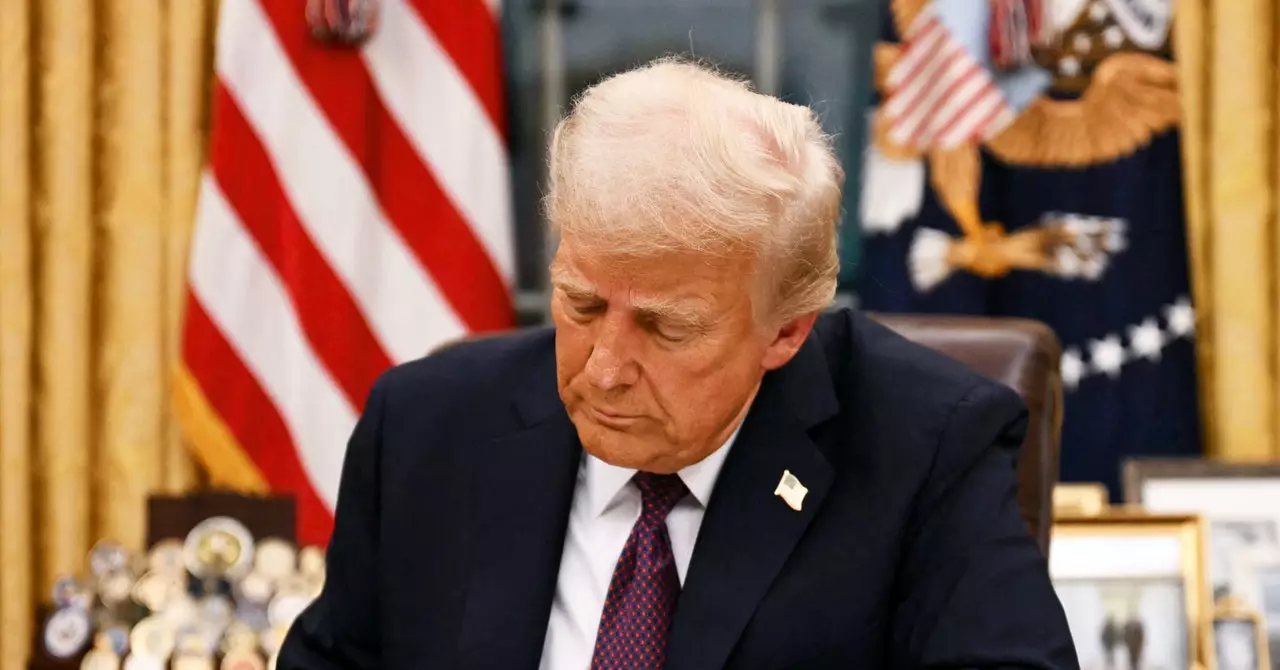The landscape of American governance often shifts with the signing of executive orders, sometimes dramatically, and Donald Trump’s initial day in office was no exception. One particular order that has sparked significant discussion is the establishment of the Department of Government Efficiency, abbreviated as DOGE. Unlike a single instance in a hail of gunfire, this move was significant enough to reverberate through policymaking circles, and the very essence of federal bureaucracies.
What makes DOGE noteworthy is not merely its name, reminiscent of a popular meme-based cryptocurrency, but rather its ambitious goals aligned with the broader vision of cost-cutting initiated by figures such as Elon Musk. By embedding this initiative within the historical framework of the United States Digital Service (USDS), which itself was created to rectify the shortcomings of government IT infrastructures, this executive order fundamentally repositions how governmental efficiency is perceived and implemented.
The DOGE initiative aims to revolutionize how government agencies manage their technology and resources. In the past, the USDS prided itself on its ability to deliver innovative IT solutions, employing agile methodologies rather than outdated processes. However, integrating DOGE into the USDS signifies a potential shift from a tech-focused agency to one that pivots towards reducing expenditures amidst a chaotic fiscal landscape. The ambitious billion-dollar savings through streamlining seem to have been tempered with a more pragmatic approach—focusing on modernizing existing systems rather than reimagining their entirety.
This duality presents an intriguing paradox: while seeking to reduce costs, the implications of embedding DOGE in the heart of the executive office may lead to increased scrutiny of how these goals are achieved. The relationship between pragmatism and ambition is intricate and fraught with tension, especially since Trump’s original elevation of organizations like DOGE was buoyed by a seemingly boundless vision.
Questions surrounding leadership and oversight remain pressing. Elon Musk’s name has been frequently linked to the DOGE initiative, although it remains uncertain whether he will officially oversee the department. His leadership style, characterized by rapid innovation and bold risk-taking, stands in contrast to the traditionally slow-moving machinery of government. Should Musk become involved, his penchant for disruption could mesh with governmental bureaucracy in unpredictable ways, potentially leading to either groundbreaking innovations or disarray.
Moreover, the rebranding of the USDS as the US DOGE Service could symbolize a broader transformation pitched at a convoluted intersection of technology and governance. This evolution will dictate new dynamics for accountability; as the personnel involved report directly to the president’s chief of staff, the lines of responsibility may blur, complicating traditional accountability frameworks within the federal government.
A Legacy in Limbo
The USDS has a storied past, having emerged from the need to salvage failed initiatives, most notably the beleaguered Healthcare.gov. Originally, it attracted talented individuals from the tech sector eager to contribute to public service, injecting a sense of innovation into government operations. However, with the advent of DOGE, the USDS finds itself at a precarious juncture, transitioning from an agency that prided itself on collaboration within government to one that might face existential challenges amid sweeping reforms.
Moving forward, the culture within DOGE could change drastically. Historically, the agency prioritized building relationships with established IT departments throughout various federal agencies, a strategic avenue that allowed for fostering a collaborative spirit. As DOGE gears up for its redefined mission, the old dynamics may be jeopardized, risking the very innovations that the USDS was built upon.
The Need for Clarity and Transparency
As these profound changes take shape, demand for transparency will intensify. Many within the governmental and tech communities will be watching closely to see how DOGE realizes its stated objectives. If history serves as a guide, transparency in operations and goals will become paramount not only for ensuring effective governance, but also for maintaining public trust amidst a governance model intertwined with market-driven ambitions.
The establishment of the DOGE initiative within the folds of the USDS encapsulates a critical moment in the evolution of federal governance. The stakes are high; if executed intelligently, it could redefine how government efficiency is perceived and achieved in the digital age. But as it currently stands, the prognosis is uncertain, and many are left holding their breath, waiting to see whether this merger of meme culture and government bureaucracy will yield positive results or venture into bureaucratic chaos.

